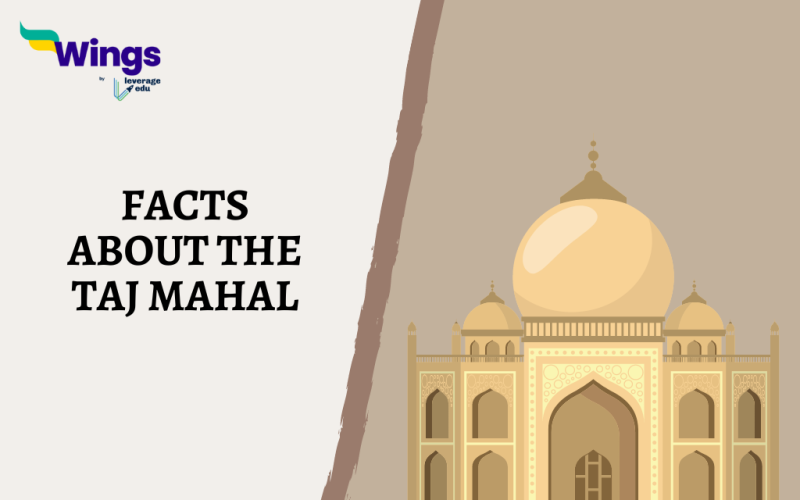When it comes to listing the popular monuments of India, the Taj Mahal holds a special place. Located in the Indian city of Agra, Uttar Pradesh, the Taj Mahal is a mausoleum of white marble, constructed during the Mughal Era in India. It is constructed on the bank of the Yamuna River and includes a vast Mughal garden of about 17 hectares. Did you know that the Taj welcomes around 2-4 million visitors a year from across the world? Well, this architecture is surely a piece of art. Here are some other interesting facts about the Taj Mahal.
Table of Contents
Historical Facts About the Taj Mahal
1. The Taj Mahal is named after Shah Jahan’s beloved wife, Mumtaz Mahal.
2. About 28 different types of stones, sourced from outside India, were used to construct the Taj Mahal.
3. The Taj Mahal appears to be of a different colour at various times of the day. It is light pinkish in the morning and golden in the late evening.
4. The tomb of Mumtaz Mahal features 99 calligraphic inscriptions of Allah.
5. The Taj Mahal also features numerous calligraphic inscriptions from the holy book of Quran.
6. The complex area of the Taj also features burials of Shah Jahan’s other wives and a few favourite servants.
7. Despite the magnificent inscriptions and decorations, the rooms which contain tombs have plain walls.
8. Shah Jahan initially wanted to build the Taj Mahal in Madhya Pradesh. However, he shifted its location to Agra due to the lack of white marble.
9. The four pillars or minarets of the Taj Mahal tilt outside rather than standing straight. This structure was constructed carefully to protect the main tomb or gumbad from being damaged.
10. The architectural details of the Taj Mahal reflect a combination of Indian, Persian, and Islamic designs.

Interesting Facts About the Taj Mahal
1. Early records of the Taj Mahal include daffodils, roses and fruit trees. However, the British Empire altered the landscape to resemble the laws of London.
2. It took about 22 years to complete the construction of the Taj Mahal.
3. Over the years, the white marble of the Taj Mahal turned yellow due to air pollution.
4. During World War II, the Archaeological Survey of India (ASI) concealed the Taj Mahal using a stockpile of bamboo.
5. The Taj Mahal is taller than the Qutub Minar in Delhi.
Taj Mahal in the Seven Wonders of the World
In 2007, the architectural marvel Taj Mahal was declared one of the New7Wonders of the World (2000–2007) initiative. Apart from being a symbol of true love between the Mughal emperor Shah Jahan and his wife Mumtaz, the Taj Mahal is a classic example of the then-popular Indo-Islamic architecture. Some historians believe that it took over 20,000 skilled workers to construct this masterpiece with intricate details.
Interestingly, these new wonders were chosen through an online contest initiated by a Swiss company, the New 7 Wonders Foundation. Millions of people from across the globe voted to make it all happen.
If you want to read more such interesting facts, you can also visit our blog 15 Historical Facts About Qutub Minar for Students.
 One app for all your study abroad needs
One app for all your study abroad needs













